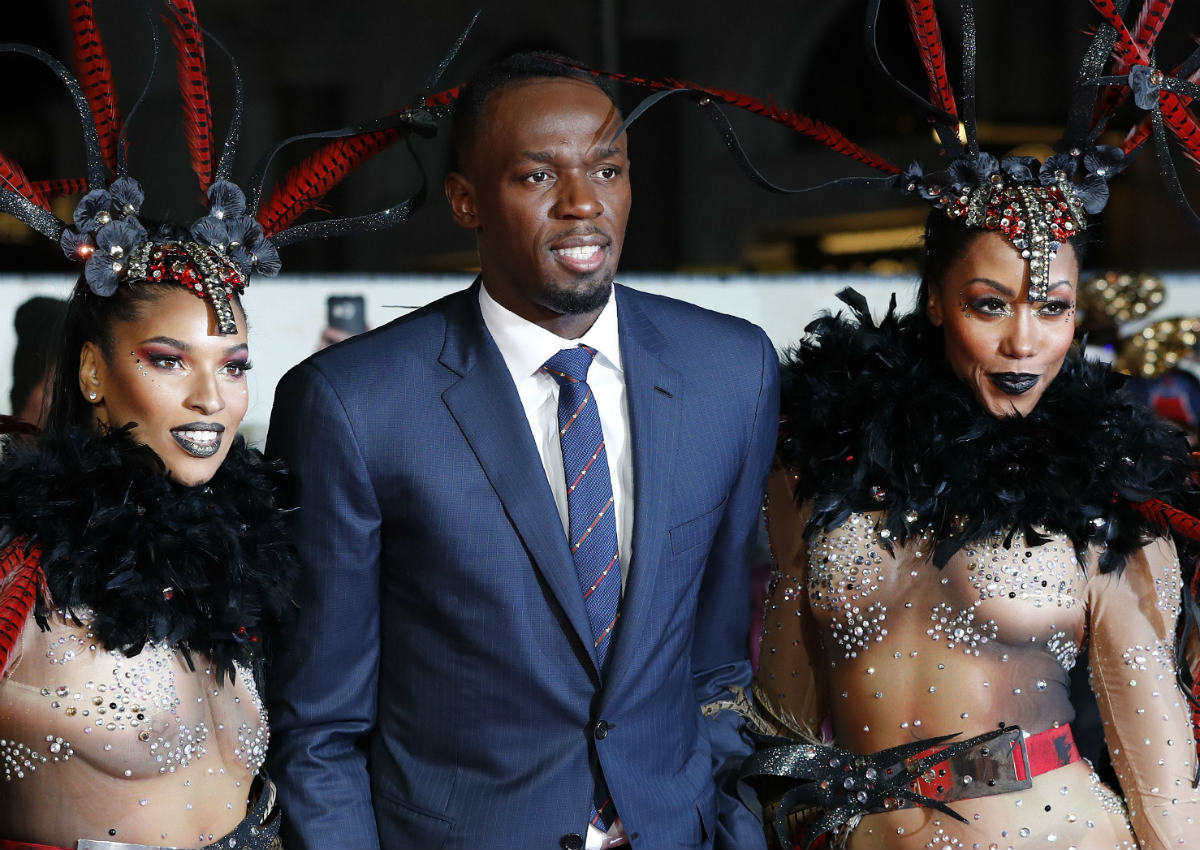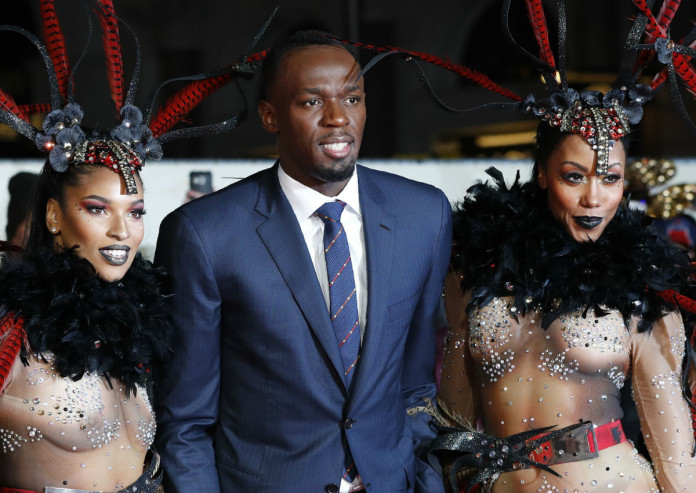The fastest human of 7.4 billion of his species is a man with a burden.
It isn’t fame or expectation, but something dull and literal and noisy and rustic.
It’s a sort of metal trolley with weights on it which is tied to his waist.
He drives forward and the trolley clanks behind him.
It is fitting that Usain Bolt is polishing humankind’s most fundamental sporting act – to run – while using the most primitive of equipment.
Genius is being trained without shirt or fuss or adoring crowd.
On a grassy field with scattered cones, his coach Glen Mills, a white-bearded, drawling savant, holds a stopwatch.
It is to this ticking music that Bolt runs.
Then he stops, his lungs beg for oxygen, as medicine is applied to his calf where he has spiked himself again.
I am watching this scene from the new documentary I Am Bolt on Sunday afternoon with a friend, both of us cemented to a couch by laziness.
It is 107 minutes of Bolt and is engaging yet a trifle hagiographic, revealing yet incomplete.
It lacks the intensity of Asif Kapadia’s Bafta-winning Senna and the thrill of Leon Gast’s Oscar-worthy When We Were Kings on the Ali-Foreman fight in Zaire.
It sketches Bolt’s greatness when in truth it is a detailed painting we seek.
Among the most intriguing men in Jamaica must be David Weller because he sticks out: Of the 78 Olympic medals the nation has won, only his bronze came in cycling.
The other 77 came in athletics.
And yet in I Am Bolt there is an insufficient dissection of this nation of the flying biped. Why do Jamaicans run? What does it mean to be fast? How is it rooted in the culture? Who are the ghosts in whose footsteps they race?
We need to understand Bolt in this terrain of the fleet, but it is never satisfactorily done.
Neither do we fully understand Bolt’s speed, for his skill isn’t adequately sliced into scientific pieces of reaction time and stride length.
And yet let us not complain too long for the camera roves far beyond the track, to the bite of the ice bath, the strain of the gym, his parents’ house, the massage table, his room at the Olympic Village.
We see a Bolt we have not before.
The best part of I Am Bolt is that it peels away his heroic skin and offers us a glimpse into Who Is Bolt.
We live in a sporting time when athletes are turned into unassailable gods, but really it’s their humanness and frailities and their conquering of anxiety which makes them fascinating.
Muhammad Ali once told his biographer Thomas Hauser that if he met Sonny Liston later in life he’d tell him, “Man, you scared me”.
Pete Sampras told the columnist Matthew Syed that “at Wimbledon, I would often wake up at 5.30am, my body pumping with adrenalin. I had a terrible fear of failure”.
Bolt, who sometimes stalks around his hotel room alone, talking to the camera, speaks honestly into it: “Every year I worry, am I still fast?”
It’s a beautiful moment, the curtains of his cockiness parting to reveal that even this man wears doubt.
Winning, the documentary also reminds us, is a weight, a sort of metaphorical trolley Bolt must pull.
The first days of greatness are laminated with innocence as the athlete joyously announces himself to the world.
But the closer the athlete climbs to the unthinkable – three consecutive 100m and 200m golds – the lonelier it can be, for no human has travelled there.
Who knows the burden of such winning? As Roger Federer said once, “I’ve created a monster, so I know I always need to win every tournament”.
The weapons of the great are practice, resilience, patience but also ego. Winning can be tiring, motivation dries in the training sun, but the idea of losing is the provocation to soldier on.
Bolt listens to Justin Gatlin brag on a TV show about winning in Rio and tells the camera, “What? He’s going to beat me? Hell, no.”
The race is effectively over.
I Am Bolt should be watched, for it adds to our appreciation of an athlete whose margins of victory seem more staggering with every passing year.
If Tiger Woods had four days to build 15-stroke leads, Bolt used the second-slowest start in Beijing to win the 100m by a proverbial mile.
A few images will stay with me, most of a man who stays grounded even as he glides over the earth.
He sees people, he smiles, he bumps fists.
He is the athletic best of them, yet one of them.
But it’s the scene to which the camera returns, of a bare-chested Bolt weeding the grass with his spikes in an almost rustic landscape which is somehow almost moving in its starkness.
As my friend, who watched the documentary with me, wrote to me on Monday morning, Bolt – at least in the film – doesn’t appear the product of sophisticated technology and shiny laboratories, but seems built of the “traditional craft of sweat, blood, push and burn”.
From a field just like any other, comes a runner like no other.
rohitb@sph.com.sg

This article was first published on December 13, 2016.
Get a copy of The Straits Times or go to straitstimes.com for more stories.







